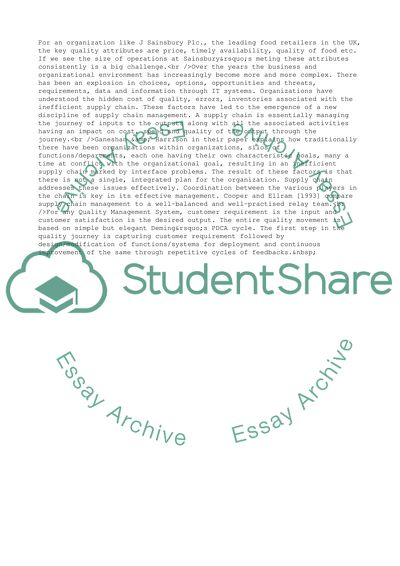Cite this document
(The New Meaning of Quality Article Example | Topics and Well Written Essays - 1500 words, n.d.)
The New Meaning of Quality Article Example | Topics and Well Written Essays - 1500 words. https://studentshare.org/business/1704047-managing-operatoins-and-the-supply-chainsainsburys-plc
The New Meaning of Quality Article Example | Topics and Well Written Essays - 1500 words. https://studentshare.org/business/1704047-managing-operatoins-and-the-supply-chainsainsburys-plc
(The New Meaning of Quality Article Example | Topics and Well Written Essays - 1500 Words)
The New Meaning of Quality Article Example | Topics and Well Written Essays - 1500 Words. https://studentshare.org/business/1704047-managing-operatoins-and-the-supply-chainsainsburys-plc.
The New Meaning of Quality Article Example | Topics and Well Written Essays - 1500 Words. https://studentshare.org/business/1704047-managing-operatoins-and-the-supply-chainsainsburys-plc.
“The New Meaning of Quality Article Example | Topics and Well Written Essays - 1500 Words”. https://studentshare.org/business/1704047-managing-operatoins-and-the-supply-chainsainsburys-plc.


